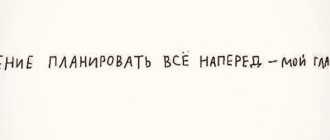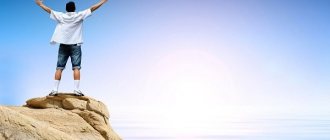How to love getting up early?
To have a successful day, it is not enough to get off on the right foot.
The first hours after waking up determine our inner mood, physical fitness and energy level with which we enter the day, so it is extremely important to start the day right.
Even waking up in a good mood, we risk quickly spoiling it if, immediately after waking up, we plunge into social networks, read news on the Internet, or have a bad breakfast. As a result of such a less-than-ideal morning, it is quite difficult to get ready for work, and we have to stimulate ourselves - with caffeine, deadlines, dissatisfied bosses or clients, using the stick principle.
What if we dedicate our morning hours to a powerful personal practice that will charge us with energy and positive emotions, remind us of our deepest values and help us set our priorities for the day?
Replacing the morning bustle with creative thoughts and a mood for self-realization will help make not only the morning ideal, but the rest of the day fruitful.
Don't reset your alarm
We are used to hating the sounds of the alarm clock, so we press the reset button or pause it: we feel good, we don’t want to get out of a warm bed. Although 10 extra minutes of sleep make us feel worse.
Evolution is a slow process, and humanity as a species is not yet accustomed to waking up from artificially created noise. So we just ignore it.
When we wake up, our body begins to produce dopamine, a chemical that suppresses the feeling of sleepiness. Its effect is comparable to drinking a cup of coffee or energy drink. When we sleep, serotonin is produced - the hormone of pleasure.
After the alarm is reset, two hormones with opposite effects begin to be produced simultaneously. Due to such a load on the body, we wake up disoriented and inhibited.
Consider more than just the reward
To motivate ourselves to do a certain action, such as waking up early in the morning and going to the shower, we use rewards. But according to Charles Duhigg, author of The Power of Habit, reward alone is not enough to make a habit stick.
You need to identify the signal that leads to undesirable behavior and replace it. For example, instead of pressing the end button on your alarm clock and falling back asleep, you can reward yourself with a cup of aromatic coffee. The smell of coffee in the room can serve as a signal for this action. If you live with someone, ask them to brew a drink every time they wake up.
Morning meditation
And of course, it’s good to start the day with meditation. It is she who will give you vigor, good mood, increased vitality, and good resistance to stress.
What was said above about hatha yoga and qigong can also be applied to meditation. It’s just that meditation is more targeted work with consciousness, psyche and soul. You can read about the benefits of meditation in a separate article; I will not repeat myself here.
But I also want to invite you to start a new day with meditation with open eyes and going out into the surrounding space. This meditation is more aimed at increasing vitality, which will be very useful at the beginning of the day.
A separate article will be devoted to it.
Follow the appropriate strategy
On average, an adult needs 7-9 hours of sleep, but some people get enough sleep in 6 hours, while others don't get 10. To perk up, one person needs a shower, while another needs a cup of coffee. Determine which category of people you belong to, and it will be easier for you to create your own strategy and understand what advice to follow.
Gretchen Rubin, in her book Better Than Before, writes that all people can be divided into four groups depending on how they are motivated by reward:
- Adherents of rules and order: always follow the rules - both external (established by their superiors) and internal (which they invent for themselves).
- Bound by promises: they work well only under pressure from authority and when they feel justified obligations to other people.
- Those who seek common sense in everything: for every task they need internal motivation, some kind of meaning for themselves, if they find it, they do the work.
- Rebels: any task makes them want to do the opposite.
Take a cool or contrast shower
Photo: Depositphotos
Cold water improves physical and mental health. Regular cool or contrast showers will strengthen your body's immune, lymphatic, cardiovascular and digestive systems. And it will make the skin more elastic.
You don’t need to immediately pour cold water on yourself - lower the temperature gradually so that your body gets used to it and you don’t feel stressed. And every day bring the water to a lower temperature than yesterday. If you prefer a contrast shower, then follow the same rule: reduce the water temperature gradually.
After a cool or contrast shower, you will feel cheerful and light. The broken morning state will disappear as if by hand.
Wake up to natural light
In one experiment, a group of adults suffering from insomnia were sent on a camping trip for a week. Within a few days without artificial light, the experiment participants not only began to fall asleep faster, but also got up easily in the morning. The inertia of sleep has almost completely disappeared.
The organizer of the study, Kenneth Wright, came to the following conclusion: to sleep soundly at night and wake up easily early in the morning, you need to get up after the sun.
It is quite possible to do this in a city: sleep in a room with a window, or better yet, place the bed closer to the window to receive the maximum amount of light in the morning.
What words exist in Russian to determine the time of day?
In addition to the generally accepted large segments, such as morning with day and evening with night, there are even smaller ones. Moreover, they are given their own names.
The first of these concepts is “dark”. That is, the time when it is still or already dark. This happens just before dawn and also just after sunset.
The next thing in the day is dawn, another name for it is dawn. It precedes the sunrise. That is, during it it is already dawn, but the sun is still hidden behind the horizon.
The third period is sunrise. It is associated with the direct appearance of the luminary in the sky.
The culmination of the sun's movement is associated with the next time of day - noon. Toward evening comes the time that is commonly called “before dark.” By analogy with the term “dark,” this is the period when it is still light.
Sunset refers to the time when the sun disappears below the horizon. Immediately after sunset, semi-darkness sets in, which is commonly called twilight.
Minimize decision making
We are all susceptible to decision fatigue. This process takes away our strength, so in the future it becomes increasingly difficult for us to make choices.
As you can see, I only wear gray and blue suits. So I'm trying to make fewer decisions. I don't want to waste energy thinking about what I'm going to eat or what I'm going to wear. Because I have too many other things to deal with.
Barack Obama
To simplify the process, Obama uses special notes that are divided into three piles on his desk: “agree,” “disagree,” and “let’s discuss.” This method speeds up the feedback cycle significantly, which means things get completed faster.
To spend your morning more productively, think about what decisions you can make automatically every day. Here are a few simple steps that will help you: choose an outfit before going to bed, eat the same thing for breakfast, get up early to avoid traffic jams.
Have a healthy breakfast
This has been said and will be said thousands more times: breakfast is the main meal of the day for a person. Especially for those who are trying to live effectively. A proper breakfast fills you up until mid-day, maintains concentration, gives energy and contains the following products:
- Whole grain cereals, porridge.
- Fresh fruits and vegetables.
- Cheese and cottage cheese.
- Eggs, omelet, boiled meat.
- Lean fish.
Eat a frog
Psychologist Brian Tracy in his book Eat the Frog! 21 ways to learn to keep up” writes that each of us has our own frog - the biggest and most important task on which we procrastinate.
If you eat a frog in the morning, the rest of the day promises to be wonderful, since the worst of the day is over.
Mark Twain
writer
That's why you should eat your biggest frog first thing in the morning, even if you don't feel like it. Our reserves of will are limited, so we need to start the day with an important task while we still have the strength.
In addition, creativity levels are higher in the morning. Research confirms this: after waking up, people experience increased activity in the prefrontal cortex, the part of the brain responsible for creativity.
My 11 morning secrets - how to spend your morning with maximum benefit?
Tip #3 – a glass of water on an empty stomach (20 seconds)
For many years in a row, no matter where I wake up, one ritual remains unchanged - there is a glass of water next to me. The first thing I do after waking up is drink a glass of clean water. You can add a slice of lemon, or without it – it’s not so important. What is important is to drink a glass of water every morning after waking up. You can do more if you want.
For those curious, no, I don’t drink hot water in the morning. I don’t know how useful this is, I haven’t studied this issue deeply, for me, firstly, it’s unnatural, and secondly, it’s tasteless. Instead, I drink hot pu-erh, but more on that below (see #9).
And no, I don’t use baking soda internally. Eating soda to alkalize a supposedly acidified body has become a popular hobby that I do not share. I don’t think it’s healthy, much less tasty. And I recommend to all ardent food eaters to study the topic more deeply and read expert assessments in order to get at least a vague idea of the complexity of internal processes and acid-base balance before trying to interfere with them so rudely.
What are the benefits of drinking water in the morning on an empty stomach?
- the body receives nutrition, the lack of fluid is eliminated;
- the gastrointestinal tract is prepared for future work;
- the gastric mucosa is cleansed, on which waste and toxins have accumulated overnight;
- a slight laxative effect appears.
When is the best time to do it?
: First thing after getting out of bed.
Tip #4 – cleaning the tongue from plaque (20 seconds)
If you brush your teeth in the morning, you should make it a rule to brush your tongue as well.
I'm sure you've heard a lot about the benefits of cleaning your tongue - now this idea is actively promoted by international corporations, because for them it opens up a new niche in the market - all sorts of clever devices for cleaning the tongue, fancy brushes, etc.
Meanwhile, since time immemorial, Indian yogis have been cleaning their tongues using this simple device:
In my opinion, since the times of the ancient yogis, nothing more effective and simple than an ordinary metal scraper has yet been invented. It is ideal, of course, to use a silver scraper, but I use an ordinary steel one, which I bought for a hundred rubles.
The procedure for cleaning the tongue itself is simple - take a scraper and carefully remove all plaque from the tongue from root to tip in a few movements.
I recorded a short video showing what it looks like:
What does tongue cleaning do?
- cleansing of toxins and impurities. Through the surface of the tongue, waste and toxins are removed from the body. Plus, bacteria accumulate there, which are then transferred with saliva to the teeth and gums, causing various sores.
- fresh breath. Bacteria and plaque on the tongue are a common cause of bad breath.
- heightened perception of taste. The taste buds are cleared of plaque – the taste of food is felt more subtly.
Tip #5 – rinsing your nose with water (2 min)
Jala neti (nasal rinsing) is a classic cleansing action in yoga, one of the shatkarmas.
A simple and effective way to cleanse the upper respiratory tract, remove excess mucus along with dust, germs and allergens accumulated on it. This is also the best prevention of colds and a very effective way against a runny nose.
In the video below I show how jala neti is performed:
What does nasal rinsing do?
- clears nose
- swelling and inflammation decreases
- capillary tone increases
- mucosal function improves
- the movement of mucus increases, which increases the protective properties of the nasal mucosa
Instead of regular water, you can use a saline solution for rinsing (concentration - 1 level teaspoon of salt per 500 ml of water). Also, herbal infusions and decoctions are used for the treatment and prevention of various respiratory diseases - you can go deeper and study this topic yourself if you are interested.
Important
: Nasal rinsing should not be done immediately before going outside, especially in the cold season. After the procedure, it is necessary to thoroughly dry the upper respiratory tract - kapalabhati can do this perfectly - see #7 below.
>>>Now we put the kettle on the stove and until it boils we have a couple of minutes. Let's make the most of them!
Tip #6 – abdominal manipulation (2 min)
Yoga has several powerful techniques that have a strong positive impact on the functioning of the digestive system and overall health. This is the Golden Foundation of Yoga.
True, not all of these techniques are available to beginners, so I suggest you master the best option for beginners - agnisara dhauti kriya (literally “kindling the inner fire”). It is no coincidence that it was called this way - agnisara really enhances the digestive fire, and also perfectly massages all the internal organs of the abdominal cavity, harmonizes the functioning of the digestive system, improves intestinal motility and promotes the elimination of toxins.
In the video I show how agnisara is performed, and also demonstrate an advanced version of working with the stomach - naoli. Before performing, read the contraindications below.
What does agnisara give?
- massages and awakens internal organs
- enhances digestive fire, improves appetite
- relieves indigestion, gas, constipation, high or low acidity
- Positively affects liver and kidney functions
Contraindications
:
- menstruation and pregnancy
- for umbilical hernia, heart disease, hyperfunction of the thyroid gland, high blood pressure (hypertension), ulcer (stomach or duodenum). This practice is not used for diarrhea and other serious intestinal conditions.
- cannot be done within 1 year after abdominal surgery (hernia, appendicitis, etc.)
- in case of illness with high fever, as well as in infectious diseases and while taking antibiotics.
When is the best time to do it?
: in the morning on an empty stomach.
Tip #7 – kapalabhati (2-3 minutes)
Kapalbhati is a yogic cleansing breath, another shatkarma.
The name Kapalbhati consists of two Sanskrit words: kapala means skull, and bhati means “to make sparkling, to clean.” That is, Kapalbhati literally translates as “cleaning the skull” - awakening and activating the brain. This is just what we need in the morning, isn't it?
In the video below I show how kapalabhati is performed. Before performing, read the contraindications.
What does kapalbhati give?
- brain massage: pressure drop in the abdominal cavity during kapalabhati breathing leads to changes in intracranial pressure, this is essentially a “brain massage”, the result of which is clear consciousness, heightened attention, optimism, cheerfulness, good mood.
- cleansing the upper respiratory tract, removing mucus and drying after jala neti (see # above)
- activates the sympathetic nervous system - invigorates, relieves stress and fatigue.
Contraindications
:
- menstruation and pregnancy
- tumors and other serious brain diseases, epilepsy,
- severe traumatic brain injury in the past,
- any acute and exacerbation of chronic inflammatory diseases
- malignant tumors of the abdominal cavity and pelvis
- arterial hypertension
When is the best time to do it?
: in the morning on an empty stomach.
If you liked abdominal manipulations and kapalbhati, then I strongly advise you to study the topic of breathing more deeply and take my introductory course on breathing practices from yoga:
Get lessons on breathing practices from Igor
It was the shortness of breath that radically changed my attitude towards the morning. And as a result, they have changed the way my entire day now goes.
Chip #8 – hanging upside down (1-2 min)
We are as young and healthy as our spine is flexible and healthy.
Perhaps the best gift we can give to our spine is to hang upside down for a minute or two.
Inversion therapy (as this practice is scientifically called) has a range of positive effects on human health. First of all, this is decompression of the spine and improvement of blood supply to the brain.
I’ll warn you right away - this practice is not suitable for everyone, so first read the contraindications below, or better yet, consult your doctor.
And if all is well, then FLIGHT:
What are the benefits of hanging upside down?
- When we hang upside down, gravity increases blood flow to the brain. [this may not be so great!!!
therefore, carefully read the contraindications below!] Brain blood circulation improves, brain cells are cleansed of toxins and saturated with oxygen. As a result, consciousness becomes clearer, vigor appears, concentration, memory, and attention improve.
- The complexion improves, headaches and insomnia go away.
- The hormonal system comes into balance thanks to additional blood supply to the pituitary gland.
- Metabolism improves, water-salt balance is regulated.
- Inverted poses promote the outflow of venous blood. In people who do not lead a very active lifestyle, toxins and waste blood accumulate in the lower part of the body. Because of this, your legs get tired quickly and often hurt, and your digestion is unstable. Regular hanging upside down is guaranteed to eliminate such problems.
- The outflow of blood from the liver improves digestion. All the most important organs receive fresh, oxygenated blood. This causes natural rejuvenation and improved health.
- Decompression of the spine occurs, muscles and ligaments relax.
Contraindications
:
- During illness and at elevated temperatures
- Menstruation and pregnancy
- Spinal disc displacement
- Thrombophlebitis
- Significant enlargement of the thyroid gland
- Weak blood vessels in the eyes
- Retinal detachment
- Atherosclerosis
- Brain thrombosis
- Oncological diseases and brain tumors
- Inflammatory diseases in the head (otitis, sinusitis, pulpitis, etc.);
- Traumatic brain injury less than a year ago
- High blood pressure, heart problems
- Inflammatory diseases of the abdominal cavity (gastric or duodenal ulcers, etc.)
- Chronic diseases of the digestive system in the acute stage
- Mental illnesses (epilepsy, etc.)
When is the best time to do it?
: in the morning on an empty stomach or in the evening on an empty stomach.
Tip #9 – a cup of hot shu pu-erh
Good Chinese teas are my weakness.
For many years now, I have started every morning with a cup of strong pu-erh. The Chinese classification of teas is not easy for a beginner to understand, so let me clarify that we are talking about shu (black) pu-erh. There are also white and sheng (green) pu-erh and they are all very different - I’ll write a post about tea someday.
In Chinese medicine, pu-erh is considered a widely used medicine; it is called “tea for a hundred diseases” and is credited with more than 20 healing properties. In Europe, pu-erh also became famous, but from a slightly different side - as an effective means for losing weight.
So, shu pu-erh is the perfect morning tea. Due to the peculiarity of fermentation, unlike other teas, shu pu-erh is not harmful to drink on an empty stomach, on the contrary, it is beneficial!
I brew tea using the pour-over method using a special tea tipot. A good addition to your morning pu-erh is a spoonful of honey or half a teaspoon of unrefined sugar.
One of the features of pu-erh is that it satisfies hunger, which is of great importance for my morning rituals: after tea, I can work out for another couple of hours without being distracted by the feeling of hunger.
What does pu-erh give?
- warms, awakens, invigorates
- satisfies hunger
- stimulates the digestive system, accelerates metabolism
- reduces blood sugar and cholesterol levels
- removes poisons, toxins and waste - this is really true, once we were poisoned in India and only thanks to pu-erh did we “get back on our feet”
- accelerates blood circulation, cleanses the blood
- helps relieve hangover
- promotes fat burning and normalizes weight
Of course, only high-quality Chinese tea, which you cannot buy in a supermarket, has the healing properties described above.
Trick #10 – Surya Namaskar (5 min)
Surya Namaskar is translated from Sanskrit as “salutation or worship of the Sun.” This is a dynamic complex that in yoga is usually performed before the practice of asanas to warm up the body, but can also be used as an independent workout. The peculiarity of this complex is that the movements are coordinated with breathing, so the process of performing Surya Namaskar is similar to dynamic meditation.
There are many variations of Surya Namaskar. In the video below, Natasha demonstrates one of the most common variations of Sun Salutations from the Sivananda yoga tradition:
What does Surya Namaskar give?
- awakens, warms up and warms the whole body
- improves blood circulation
- develops flexibility, strength and endurance
- relieves tension and stress, instills confidence and optimism
- clears energy channels, balances the chakra system
Tip #11 – morning meditation (5-10 min)
I have already written so much about the benefits of meditation that I don’t want to repeat myself.
Let me just say that morning meditation (even if it’s just 5-10 minutes) is perhaps one of the most useful habits. However, I dare to suggest that since you are reading this post, then most likely you have already experienced the benefits of meditation yourself by completing my initial seven-day course.
What meditation is best to practice in the morning?
You can use the technique from the initial course and practice the audio meditation for every day, which I recorded for you.
If you have already completed my advanced course Mind Detox 21, then you can practice satipatthana - a more effective meditation technique that we mastered in the course.
And if you haven’t tried meditation yet, then sign up right now and tomorrow morning you will begin to form a new habit for yourself - meditate!
I hope this post inspires you to start your day more mindfully and make the most of your most valuable morning time.
>>>Was this post helpful to you? Then share with your friends and wish them Good Morning! To share, click on one of the social buttons. networks below.
PS Write in the comments below, are you interested in any of my morning practices? What do you want to try that remains unclear? And share your secrets of a good morning! I read all the comments










